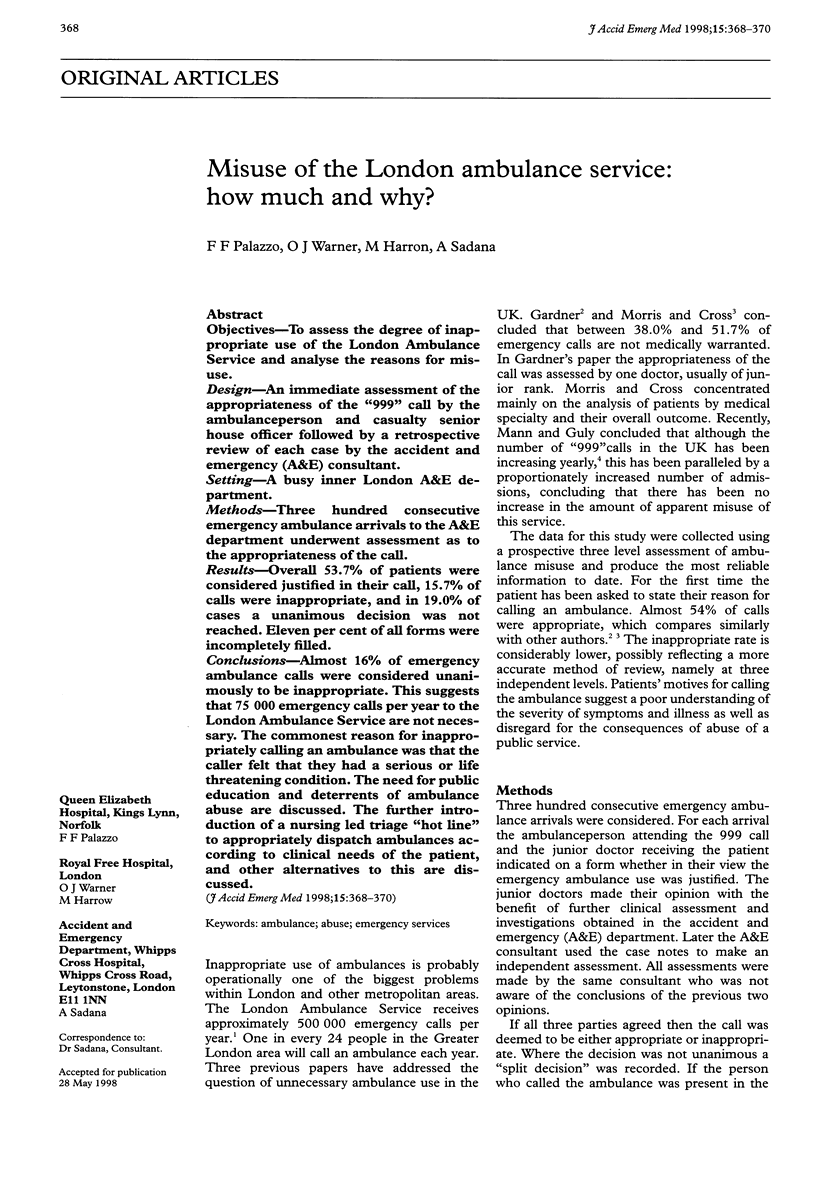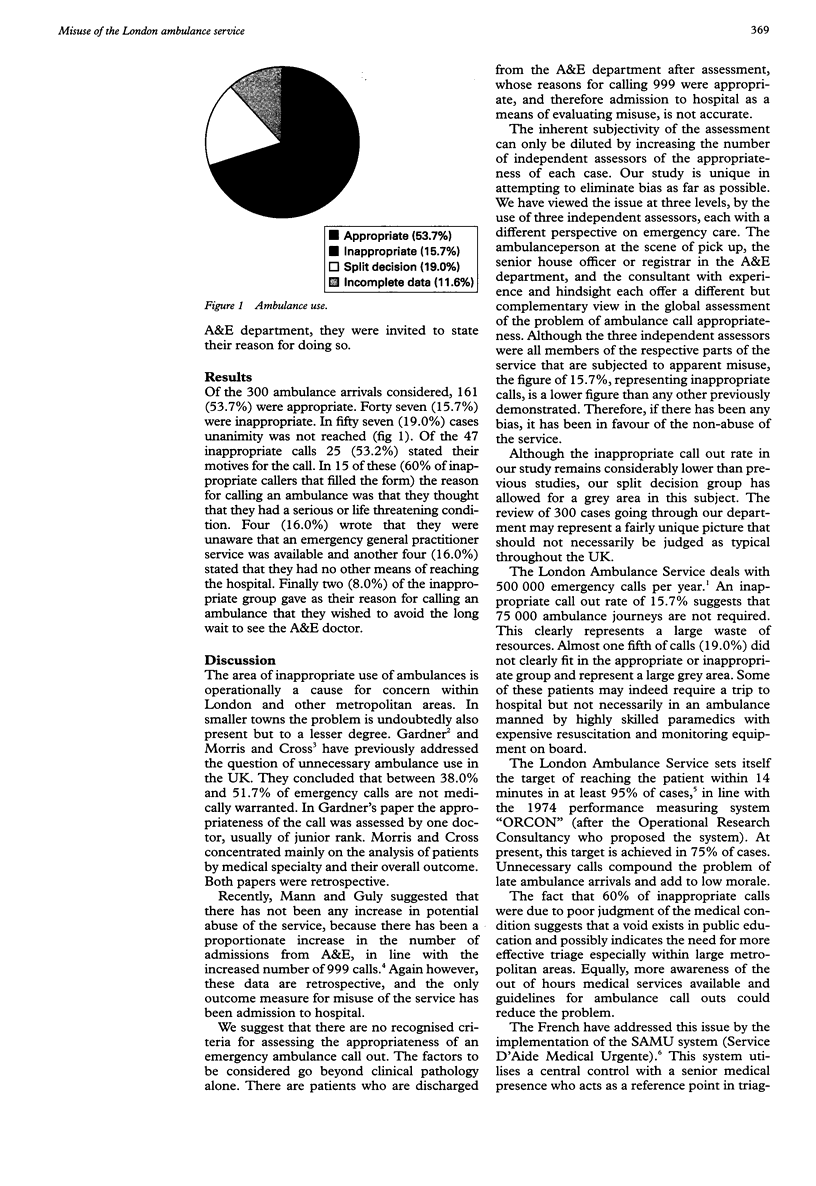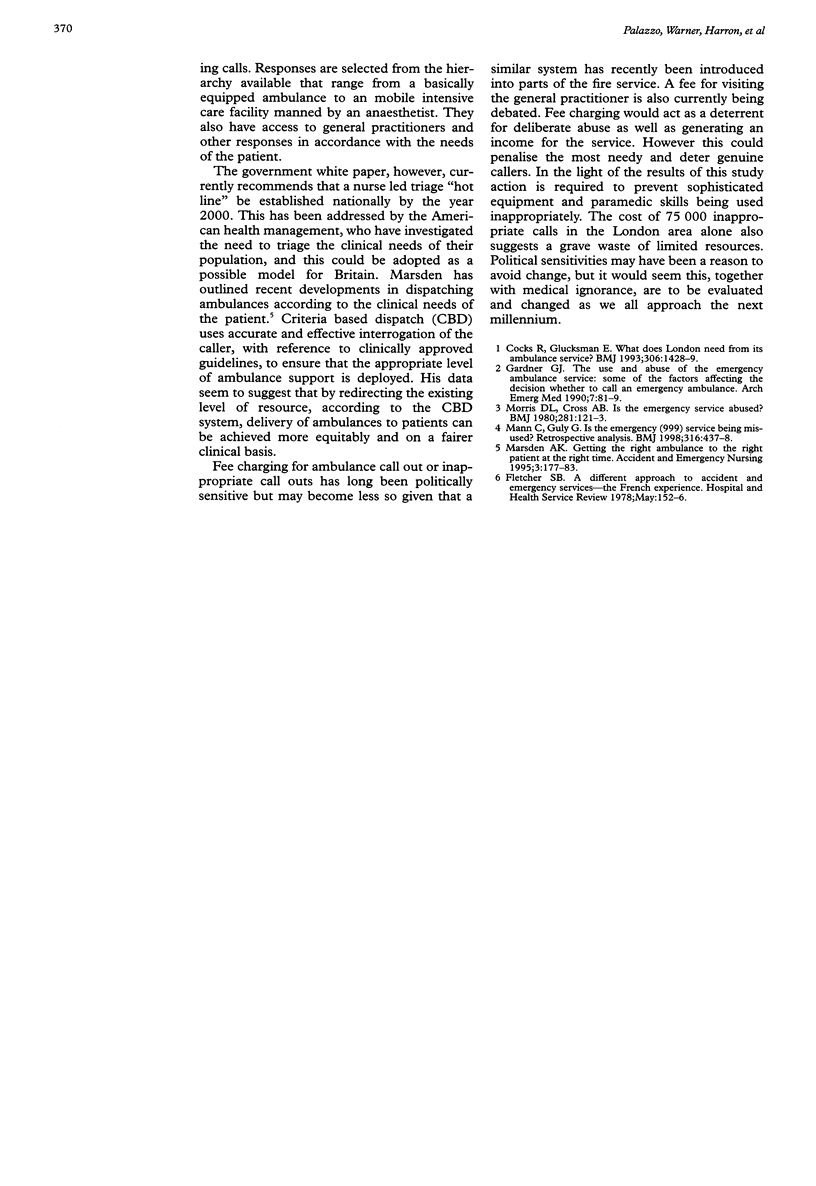Abstract
OBJECTIVES: To assess the degree of inappropriate use of the London Ambulance Service and analyse the reasons for misuse. DESIGN: An immediate assessment of the appropriateness of the "999" call by the ambulanceperson and casualty senior house officer followed by a retrospective review of each case by the accident and emergency (A&E) consultant. SETTING: A busy inner London A&E department. METHODS: Three hundred consecutive emergency ambulance arrivals to the A&E department underwent assessment as to the appropriateness of the call. RESULTS: Overall 53.7% of patients were considered justified in their call, 15.7% of calls were inappropriate, and in 19.0% of cases a unanimous decision was not reached. Eleven per cent of all forms were incompletely filled. CONCLUSIONS: Almost 16% of emergency ambulance calls were considered unanimously to be inappropriate. This suggests that 75,000 emergency calls per year to the London Ambulance Service are not necessary. The commonest reason for inappropriately calling an ambulance was that the caller felt that they had a serious or life threatening condition. The need for public education and deterrents of ambulance abuse are discussed. The further introduction of a nursing led triage "hot line" to appropriately dispatch ambulances according to clinical needs of the patient, and other alternatives to this are discussed.
Full text
PDF


Images in this article
Selected References
These references are in PubMed. This may not be the complete list of references from this article.
- Cocks R. A., Glucksman E. What does London need from its ambulance service? BMJ. 1993 May 29;306(6890):1428–1429. doi: 10.1136/bmj.306.6890.1428. [DOI] [PMC free article] [PubMed] [Google Scholar]
- Fletcher S. B. A different approach to accident and emergency services--the French experience. Hosp Health Serv Rev. 1978 May;74(5):152–156. [PubMed] [Google Scholar]
- Gardner G. J. The use and abuse of the emergency ambulance service: some of the factors affecting the decision whether to call an emergency ambulance. Arch Emerg Med. 1990 Jun;7(2):81–89. doi: 10.1136/emj.7.2.81. [DOI] [PMC free article] [PubMed] [Google Scholar]
- Mann C., Guly H. Is the emergency (999) service being misused? Retrospective analysis. BMJ. 1998 Feb 7;316(7129):437–438. doi: 10.1136/bmj.316.7129.437. [DOI] [PMC free article] [PubMed] [Google Scholar]
- Marsden A. K. Getting the right ambulance to the right patient at the right time. Accid Emerg Nurs. 1995 Oct;3(4):177–183. doi: 10.1016/0965-2302(95)90002-0. [DOI] [PubMed] [Google Scholar]
- Morris D. L., Cross A. B. Is the emergency ambulance service abused? Br Med J. 1980 Jul 12;281(6233):121–123. doi: 10.1136/bmj.281.6233.121. [DOI] [PMC free article] [PubMed] [Google Scholar]



